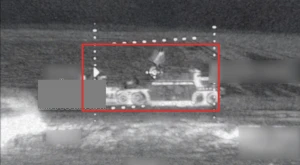
Debunking economic myths about Ukraine’s post-war recovery
Popular narratives about Ukraine's post-war recovery are wrong, and their widespread acceptance can have very negative consequences
Lately, I have come across more and more statements (mostly by "macroeconomists" and visionaries with futurologists, but others delve in the topic as well, prompting me to address it) with a standard set of narratives about Ukraine's post-war recovery. I believe these narratives are fundamentally flawed, and their persistence in the public consciousness could potentially hinder effective post-war recovery planning.
In the worst case scenario, these misconceptions could lead to long-term consequences for Ukraine,mirroring the trajectory of Bosnia and Herzegovina after the Yugoslav war. What I mean is that Bosnia was one of the three victorious countries in the Yugoslav war (along with Croatia and Kosovo) However, its post-war reconstruction serves as a cautionary tale of how a country can rapidly deplete its political capital gained by winning a war, receive limited aid from international donors, engage in internal conflicts, attract negative Western media attention, and ultimately achieve only partial restoration of war-damaged infrastructure. And, simultaneously, get almost nothing that would provide the basis for the country's sustainable development after the war, from foreign direct investment to normal institutions that would allow the country to get out of the rut, and also get one of the largest (in relation to the country's population) diasporas abroad, which left and is not going to return. That is why I decided to try to collect these urban legends and comment on them, so that we do not fall into the trap of unjustified expectations and wrong priorities in what needs to be done to make postwar recovery successful. I must warn you right away that this text is very gloomy, so I suggest that those who are not in a good mood in the morning do not read it.
But let’s get to these urban legends that circulate from one source to another in a pattern.
Ukraine is a great transit state
Ukraine played a significant role as a transit country due to its strategic location facilitating two major cargo flows. Firstly, it served as a crucial East-West transit route, with goods arriving at the Black Sea ports in Ukraine and then continuing on to countries without direct access to the sea, such as Belarus and Kazakhstan. Additionally, regions in close economic proximity to Ukrainian ports often preferred them over Russian ports (regions of the aggressor country close to Ukraine). Secondly, Ukraine was essential for the South-North flow, where, for example, it was more cost-effective to transport coal from Komi to Odesa and load it onto ships. Similarly, some goods destined for the Baltic states and Finland were shipped from Turkey to Odesa and then transported to their final destinations in containers, avoiding the longer European route. Ukraine's transit prominence was maintained by its unique post-Soviet railway system (making it less costly to avoid transshipment at Romania's Constanta, as changing train specifications at the border was expensive), the presence of landlocked countries to the east and north of Kyiv, which found it more efficient, cost-effective, or shorter to ship through Odesa (e.g., Kazakhstan, Azerbaijan, Belarus), and the extensive congestion and specialization of Russian ports along the Black Sea.
The transit of gas, oil, and ammonia from Russia through Ukraine was based on roughly the same logic. The infrastructure had already been built, transshipment or pumping capacities were already available, and creating alternatives was economically unfeasible.
“Due to the ongoing war, Ukraine is poised to shift from being a transit country to becoming the final destination for goods. This transformation is driven by the stark reality that, post-war, Ukraine's borders with Belarus and Russia will resemble something akin to the border between Israel and Syria. These borders will consist of physical barriers, resembling crocodile ditches, allowing only limited individual movement rather than facilitating the extensive transit of goods.”
In other words, all of Ukraine's transit advantages have been multiplied by zero because the war has made it impossible for me to imagine a large transit trade through Ukraine with Russia, just as I cannot imagine a large transit that Russia is letting through to Central Asia or from Central Asia to the West.
There is a lot of money in the world that is destined to come to Ukraine
Indeed, there is currently approximately USD 25 trillion of uninvested money in the world. However, these funds are not sitting idle because they are awaiting the end of the war in Ukraine. Instead, the owners of this capital are hesitant to invest because the risk-to-reward ratio offered by available investment opportunities doesn't align with their preferences. They are not counting on the war ending, even if it represents just 0.1% of the USD 25 trillion. These investors have already made up their minds that they are uninterested in investing in places like Chile (which received the highest proportion of foreign direct investment in 2022 as a percentage of GDP), uninterested in commodities (despite being the top-performing asset class in 2022 with a 22% return and high liquidity), and uninterested even in US Treasuries, which are currently yielding around 5% annually.
I have seen several myths in recent years. In the 1990s, there was the myth of "dumb Arab money," which suggested that Arabs were eager to invest anywhere offering a 5% annual yield. I remember encountering people at Deloitte, where I worked at the time, who would say, "We have an interesting idea to invest in buying apartments in Kyiv; it yields at least 20% in dollars. We read in the newspaper that Arabs offer money at 2% per annum; we can offer them 5%, no, 7%! Find us a way to reach out to the Arab sheikhs, please!" In the 2000s, it was the myth of "dumb Russian money," implying that there was so much Russian capital available that it was being invested everywhere just because it was abundant. In the 2010s, it was the legend of "dumb Chinese money" circulating worldwide. No one had ever seen this money, but everyone seemed to know someone who had a connection to someone who had access to this money and was now "putting it to good use."
The flow of big money into a country is the result of a combination of many factors, and Ukraine has already had two waves of big money, in the period 1993-1998 (after gaining independence and before the first financial crisis) and in the period 2005-2008 (from the Orange Revolution to the global financial crisis), and both periods left many investors with less than positive memories.
I'm old enough to remember when, at the behest of one of Odesa's big police chiefs, representatives from one of the largest pension asset management firms in the UK and the US, Invesco, were arrested during a shareholders' meeting in full view of television cameras. The news commentator declared, "These dishonest businessmen, representatives of international capital, have come to plunder Odesa's best assets." Invesco manages a significant amount of assets, roughly around USD 1.5 trillion. Unfortunately, Ukraine has a troubled history when it comes to investment. The notion that money will naturally flow in due to its abundance overlooks the need for an analysis of why numerous foreign investors, both portfolio and strategic, departed Ukraine with such negative experiences. Without conducting this analysis and addressing past mistakes, it will be challenging to attract investors beyond those with purely speculative interests.
The Ukrainian economy is one of the most underestimated
To those who say this, I suggest that you try to buy at least 10,000 hectares of agricultural land in Western or recently liberated Southern Ukraine. Or buy a business that is operational and generates export revenues. Or buy a house (and compare the cost per square meter in Kyiv with the cost per square meter in Porto, Cologne or Riga, where there is no war).
Ukraine is a large sales market
Ukraine was among the “aging” countries of Europe before the war. The war made it even “older.”
“The median age of Ukraine's population is 44.7 years, meaning that 50% of the country's population is already approaching or beyond retirement age.”
Aside from the concerning low income levels and GDP per capita, it's important to consider that older societies tend to consume less compared to younger ones, except in specific areas like elderly care, funeral services, and tourism. Prominent Ukrainian sociologist Volodymyr Paniotto prompts us to contemplate how Ukrainians will navigate life in a country with a population of around 20 million. While this is still a considerable size by European standards, about the size of Romania, it’s demographic is not Romanian at all. If there is no rapid and sustainable GDP growth after the war, then the market will primarily revolve around the sale of the most affordable retail services, along with services related to elderly care and funerals, as older individuals have often already acquired most of their essential goods.
Many new enterprises will be built in Ukraine
See above. Ukraine is one of the “oldest” countries in Europe. If nothing is done about the demographics, there will be no one to work at the new enterprises. No one builds large new enterprises where the labor pool is shrinking every year and there is a risk that in a few years the cost of labor will be off the charts because there will be no one to work. It is easier to build something in Turkey (a “young” country, the median age of the population is 31.8 years, the population is growing by a million every year, and the total population is 85 million).
Investment funds can rebuild the country
"Let's raise USD 25 billion for the Ukrainian recovery fund and its economy will flourish."
The problem is that in Eastern Europe (the closest analog), investment funds have played a much smaller role in transforming the economies of countries than strategic investments. There is an exception: the healthcare industry, where the activity of investment funds has completely transformed the sector, creating, in fact, a completely new industry. In all other cases, strategic investors played a major role. Volkswagen, which bought Skoda and turned it into an entirely new company, or Porsche, which built a plant in Slovakia that saved Porsche from disappearing from the global automotive map. Deutsche Telekom, which developed mobile and wireline communications in almost all post-socialist countries. Unicredit, which bought banks and provided access to credit resources. ArcelorMittal, which consolidated the steel industry. Carlsberg, Danone, Nestlé, Kraft, which completely transformed food production. And I haven't even started talking about the service sector, from audit and legal services to hotels.
“In essence, what's required are investments both in private enterprises, which can potentially evolve into national or regional industry leaders, and, more importantly, strategic investments that are crucial for long-term sustainable development.”
Currently, Ukraine lacks the necessary investment infrastructure. The primary challenge for potential investors is not the availability of funds but finding viable investment opportunities that come with an acceptable level of risk, especially beyond lending to state-owned entities or the government itself. Ukraine's legislation for investor protection is outdated by about three decades, and its judicial system faces well-documented issues. All these challenges are further compounded by the ongoing war and the associated risks.
I apologize for the pessimistic tone of this text. However, it seems like there's a prevailing narrative that suggests Ukraine can simply wait for money to flow in and that even an average construction worker will earn so much that people from countries like Poland, Turkey, and Romania will flock to Ukraine, and we'll have to send them back.
In 2022, the most attractive countries for foreign direct investment were Chile (foreign direct investment equaled 4.5% of the country's GDP), Sweden (3.9%), Israel (3.7%), Poland (3.6%), and Australia (3.2%). What do they have in common? No, not the low tax burden (taxes in Chile are a “macroeconomist's” dream, with a single tax of 40% of income, not mentioning Sweden and Australia).
I apologize for stating the obvious, but the rule of law, the equitable enforcement of laws, the safeguarding of investors' rights, and the absence of organizations with three-letter names influencing corporate affairs are all vital components. I know it sounds very boring, but without this, there will be no normal environment for investment. At least I think so.
Source.
About the author: Serhiy Budkin, founder of the FinPoint investment company, investment banker
The editors do not always share the opinions expressed by the blog authors.



- News











































